Over the weekend, I was *THRILLED* to find that Apartment Therapy featured our DIY kitchen renovation on their blog.
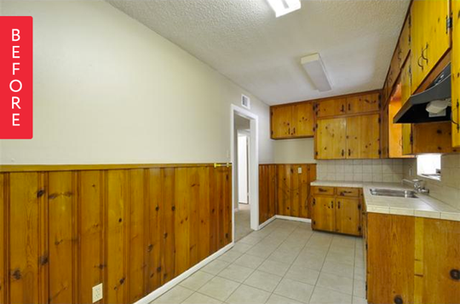
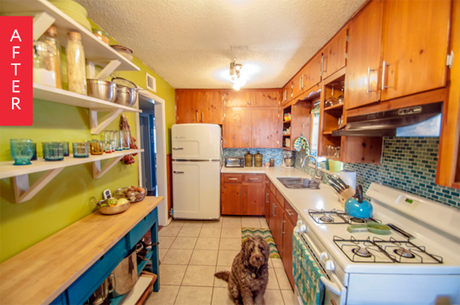
I’ve never hid the fact that AT is a huge inspirational blog for me, so it was really humbling to see our kitchen featured on their site. One thing that surprised me, however, was many of the comments. Namely, many people were surprised (some pleasantly, some not so) to see I kept the knotty pine cabinets rather than paint over them.
I can’t say I blame those curious commentors. In fact, when we first purchased our new house, I even wrote a blog entitled “Naughty Pine” all about how much I hate how knotty pine cabinets look. They were, I reckoned, dated and dark and dirty. The fact that I decided to keep them surprised me as much as anyone else. So, why did I do it?
For one, we didn’t have it in our budget to rebuild the cabinets or change the general layout of the kitchen. That certainly plays a significant role.
But why not paint?
It’s generally acknowledged that kitchens and bathrooms are the spaces in homes that age most poorly. Today, it’s all about granite counter tops and stainless steel appliances. But in the ’90s it was mostly country chic that dominated the Better Homes and Gardens catalogs. The ’80s, dark wood trim surrounding stark white cabinets seemed to be all the rage. And in the ’70s, avocado green appliances were the standard. What I’m getting at is this: every era has had it’s signature look that ultimately becomes dated and disliked. Trends and fashions are cyclical and even if you renovate to achieve the most modern look possible, history says it will one day be out of style, old fashioned and in need of a yet another “upgrade.”
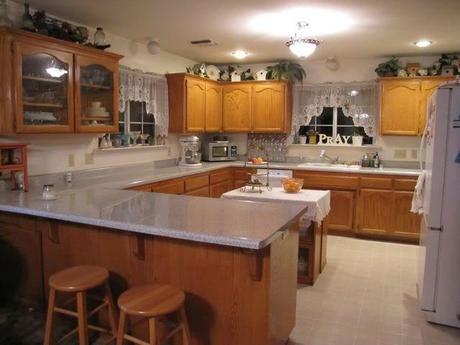
A traditional ’90s kitchen from gardenweb.com
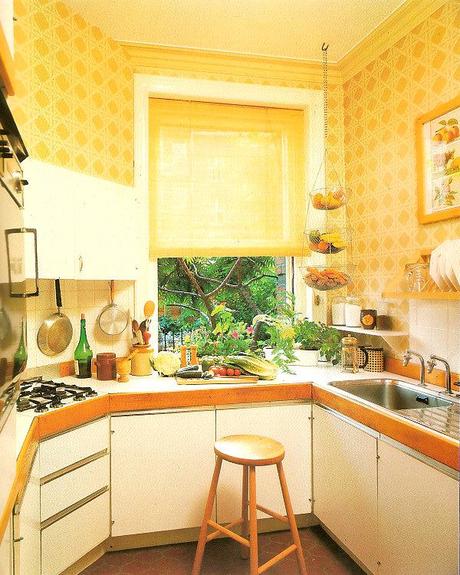
An ’80s kitchen courtesy Mirror80
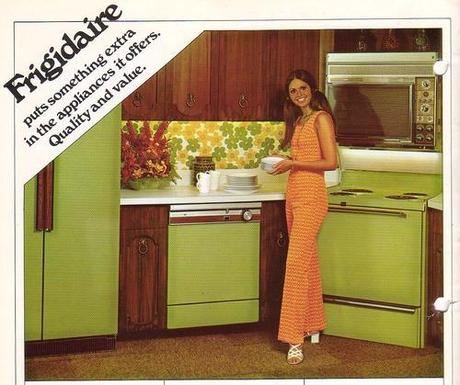
So rather than try and completely modernize the kitchen, I decided to embrace the era in which the house was built–1957–but still give the kitchen some life and updated style. It’s why we bought a Big Chill fridge (my most prized possession) and opted to keep the classic, mid-century cabinets in their knotty pine glory while still bringing in a shiny and new countertop and back splash. At the end of the day, a 2012 kitchen in a 1957 home didn’t seem like the best fit.
There are a handful of other blogs that reinforce this ideology. Retro Renovation, is one that very intentionally focuses on preserving the original integrity of older homes, and which has been a valuable resource for me. Check out some of their time capsule homes.
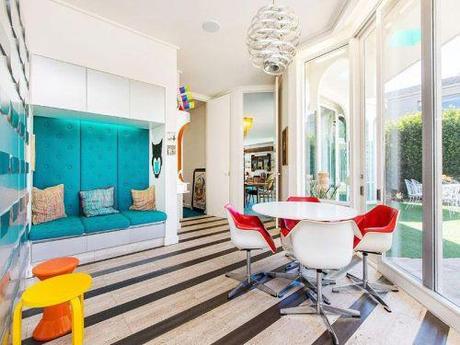
Courtesy: Retro Renovation
Another local blogger (and amazing photographer) that understands the importance of balancing history with modernity is Heather Banks of Brady Bunch Remodel fame.
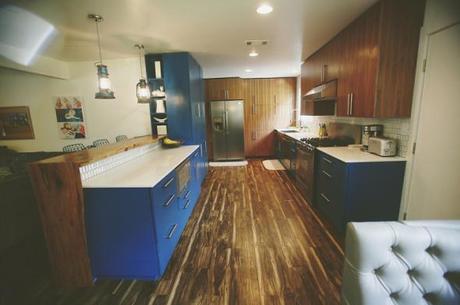
Courtesy: Brady Bunch Remodel
At the heart of it, what I’m trying to say is this: old homes have their charms and their flaws. And while it’s certainly tempting to demolish and reconstruct your home (if you have the means) to a more modern and magnificent space, there’s also something to be said for preservation. And I hope other caretakers of homes of other eras will find ways to enhance AND embrace the features that make those spaces a part of their city’s history.

